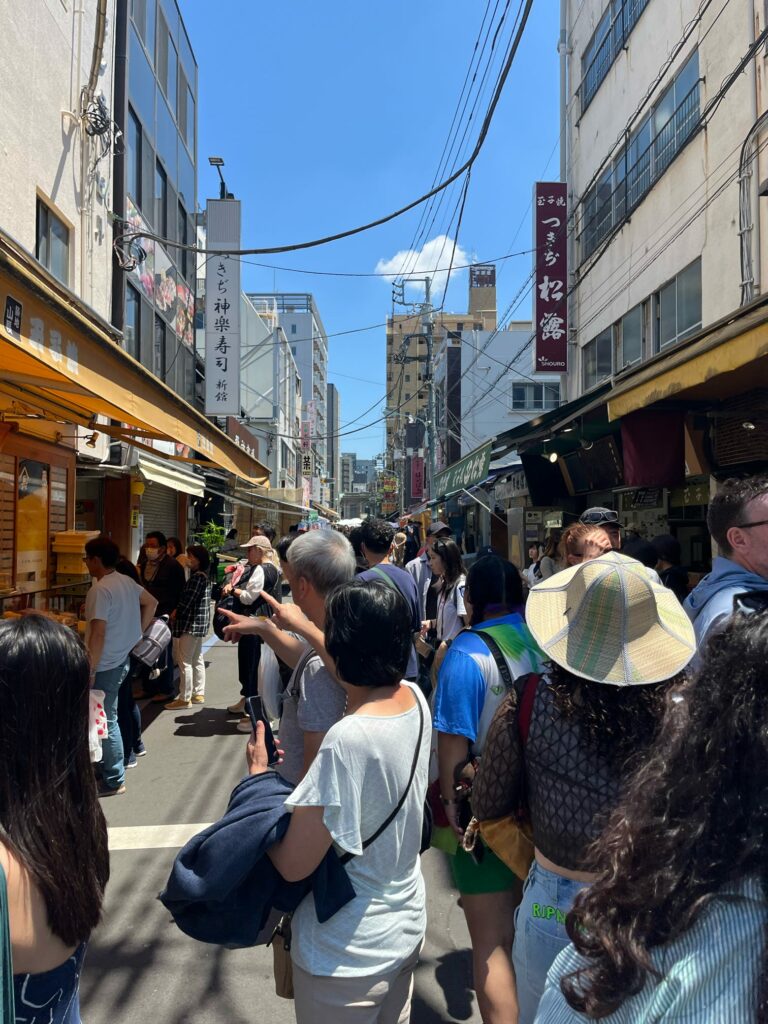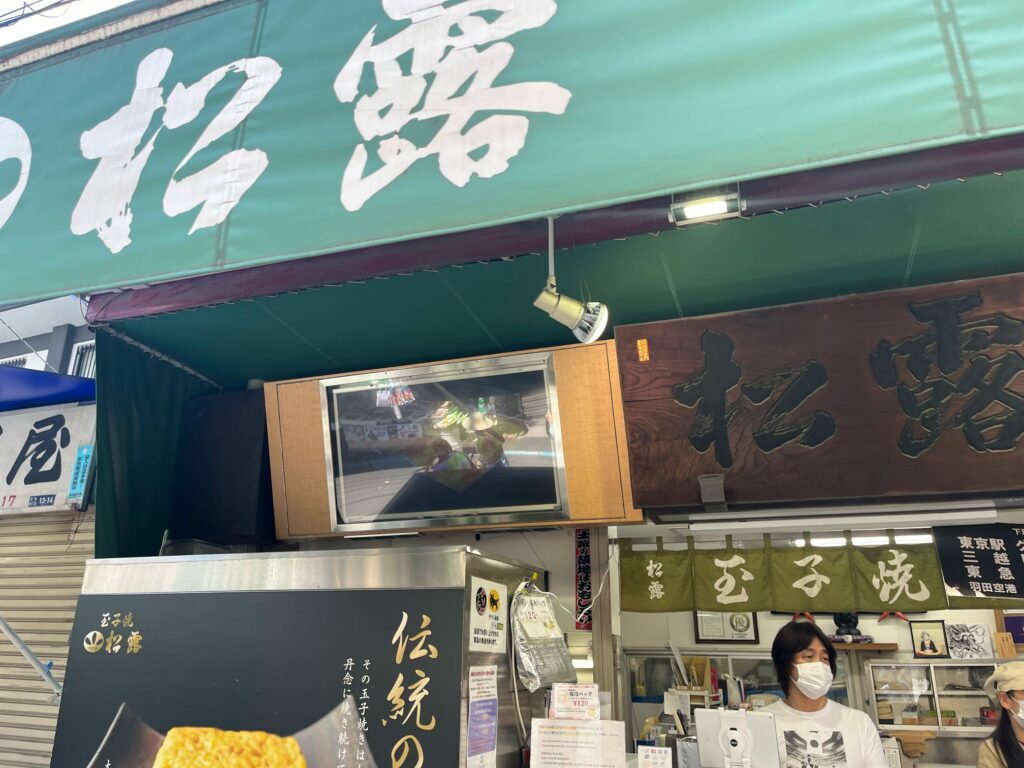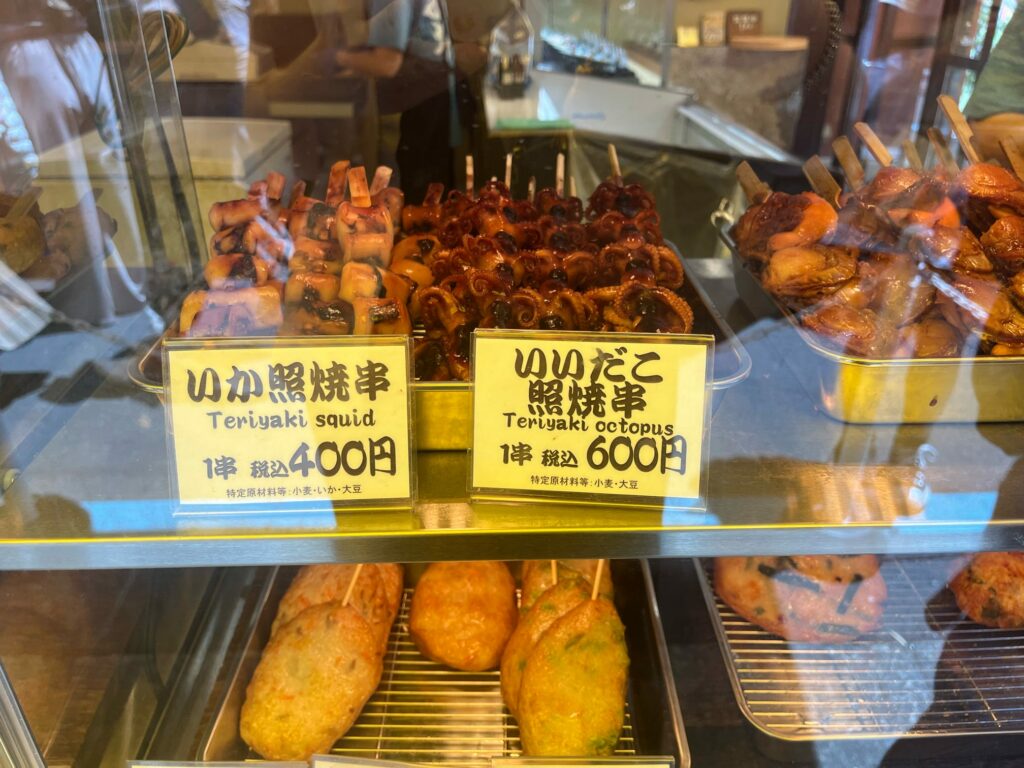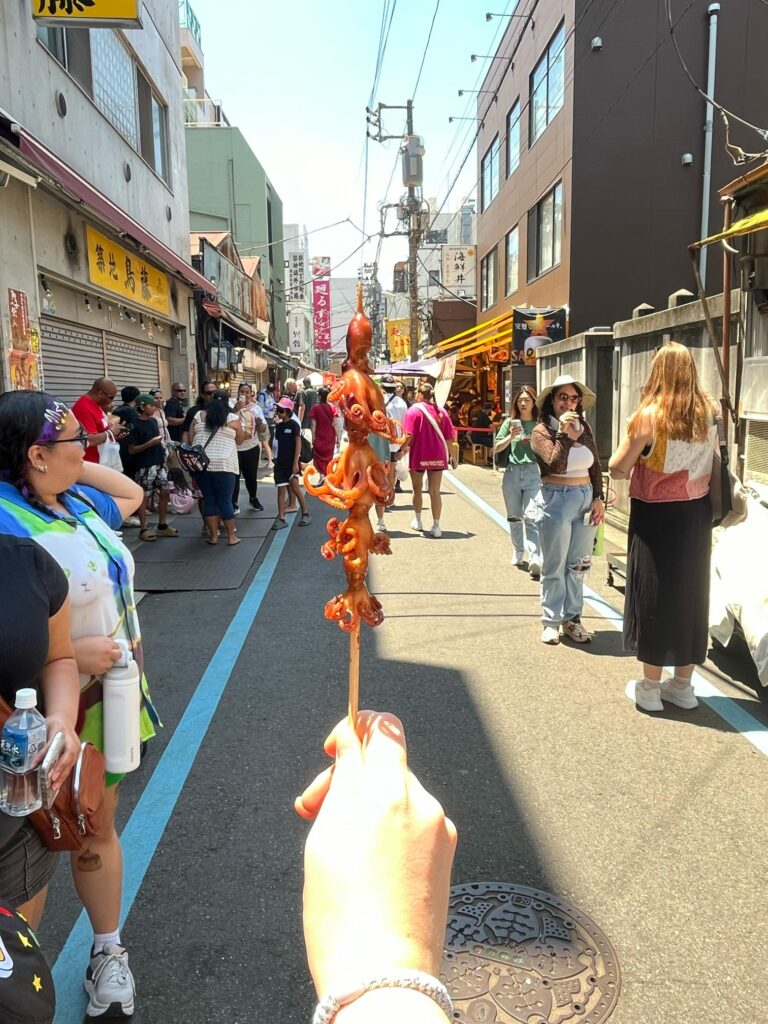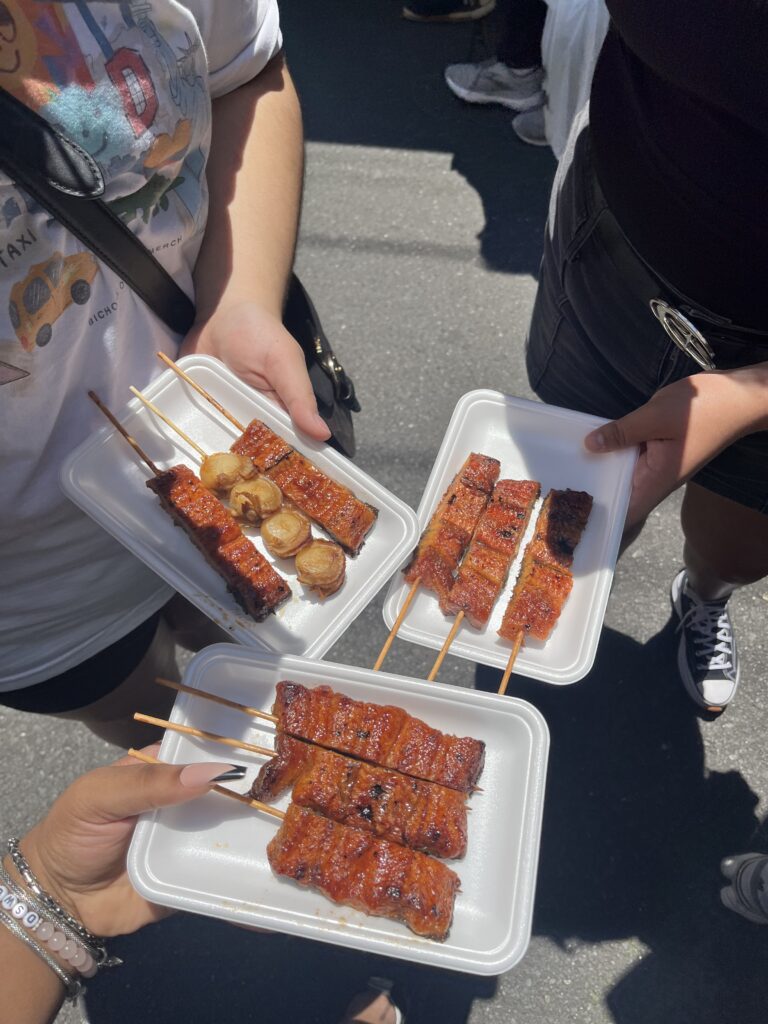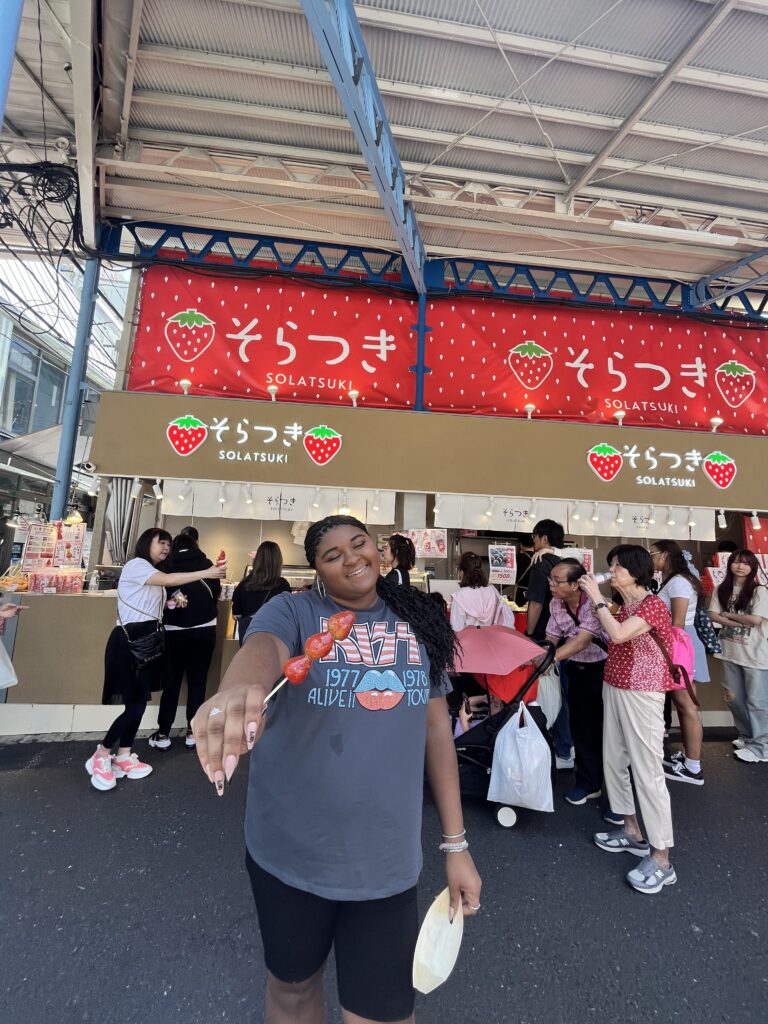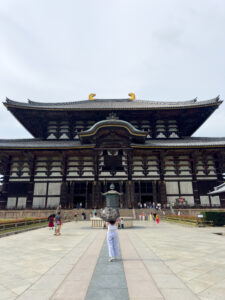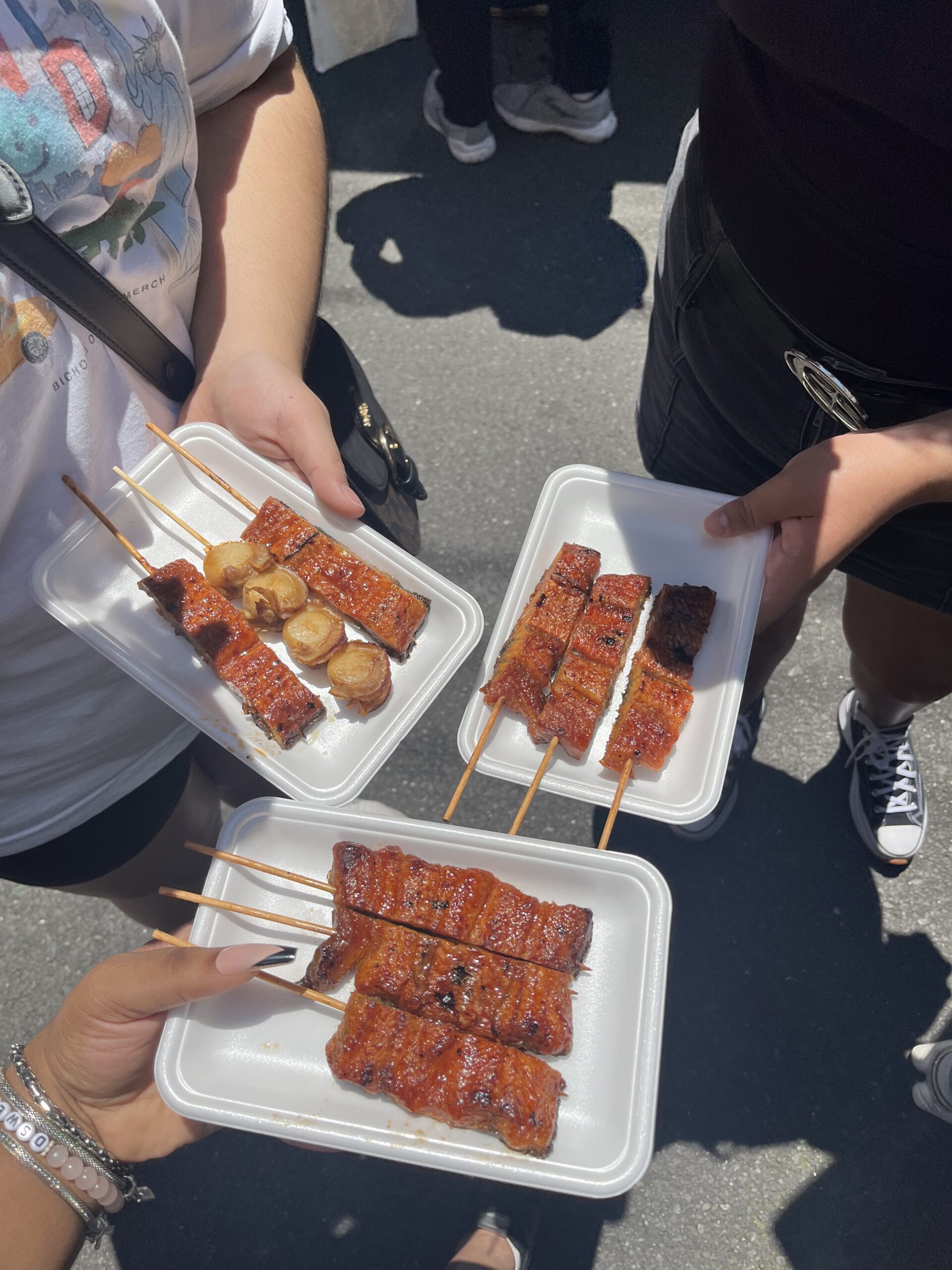
When you think about Japan, the food that instantly comes to mind is sushi. It’s not bad, but there is a whole world of food and culture outside of sushi.
Tokyo’s street food scene offers everything from sweets to savory skewers. Let’s take the time to dive into the world of street food in Japan’s capital.
Tokyo’s street food culture has deep roots that trace back centuries, evolving alongside the city. Originally, street food in Tokyo served as a convenient and affordable option for laborers and travelers passing through the bustling city.
During the Edo period, street vendors, known initially as yatai (small, mobile food cart) began to occupy the streets of Edo. These food stalls offered simple and easy dishes such as grilled fish, skewered meat and much more. Yatai stalls have become a representation of the past and tradition. Yatai stalls are loved by locals and sought out by tourists who want to embrace themselves in Japanese culture.
After World War II, Tokyo was in a food shortage. Street food played a significant role in getting Japan back on its feet. By providing accessible and affordable meals, those who were struggling were able to rebuild their lives.
Asakusa is famous for its traditional shops and food stalls close to Senso-ji Temple. This area offers a variety of snacks and treats. One of the must-try street foods in Asakusa is ningyo-yaki. These little doll-shaped cakes are a signature dish from this region, which are prepared in special molds and frequently have shapes inspired by the monuments at Asakusa. They are made with pancake-like batter and filled with delicious red bean paste.
Another must-try street food is Japanese fried chicken, also known as karaage. A tasty snack that’s difficult to resist is served with perfectly golden-fried marinated chicken pieces that are bite-sized.
Another must-try street food is kibidango. These classic millet-based skewered sweets are chewy and soft and frequently rolled in sweet soybean flour.
Grilled seafood is abundant at Tsukiji, ranging from shrimp and scallops to eel and squid. Most often, vendors prepare the food right before you, enhancing the flavors with soy sauce and other seasonings.
Street food in Tsukiji also includes fired or grilled seafood skewers, such as fish, crab, eel and octopus. These skewers showcase the market’s fresh offerings and are convenient to consume. Candied fruits, including strawberries and grapes, are featured tanghulu at Tsukiji. These fruits are covered in a hard candy shell that gives them a satisfying crunch. Fresh fruit within a sweet, glossy covering combine to provide a delightful and refreshing dessert that locals and visitors love.
Tokyo’s street food culture is essential to the city’s character. Street food provides an affordable gateway for locals and tourists to try a wide range of food. It offers options for every budget, so anybody may enjoy the rich tastes of Tokyo without breaking the bank.
One of the many charms of street food culture helps visitors find genuine local experiences in Tokyo. Visitors can get a true sense of the local way of life and get fully immersed in Japanese culture by trying street cuisine. Street food stalls serve as social hubs where people can eat, chat and make connections. This is important because you have the power to create a bond that transcends any language barrier.
Tokyo has a lively and diverse street food scene, and being aware of the customs and etiquette can enhance your experience and show respect for local norms. One tip to keep in mind is eating while walking in Japan, compared to other countries and cultures, is looked down on. If you buy street food and participate in street food culture, ensure you find an eating place that does not obstruct pedestrian traffic.
Another thing to remember is that many street food stalls only accept cash. It is a good idea to have Japanese bills and coins with you. Another thing to keep in mind is that it is taboo to take photos of food or stalls without permission. It’s always advised to ask beforehand, even though vendors are accustomed to tourists taking pictures of them.
Tokyo’s street food scene has changed to adapt to evolving tastes and lifestyles while maintaining cultural relevance. It continues to be a vital component of the city’s culinary scene, presenting a lively and varied range of flavors. Tokyo’s street cuisine offers a glimpse into the city’s spirit, showcasing its vibrant culture, fast-paced way of life, and rich cultural past.
These street food encounters, which locals and visitors appreciate, leave enduring memories and highlight Tokyo’s reputation as a top food destination worldwide.
